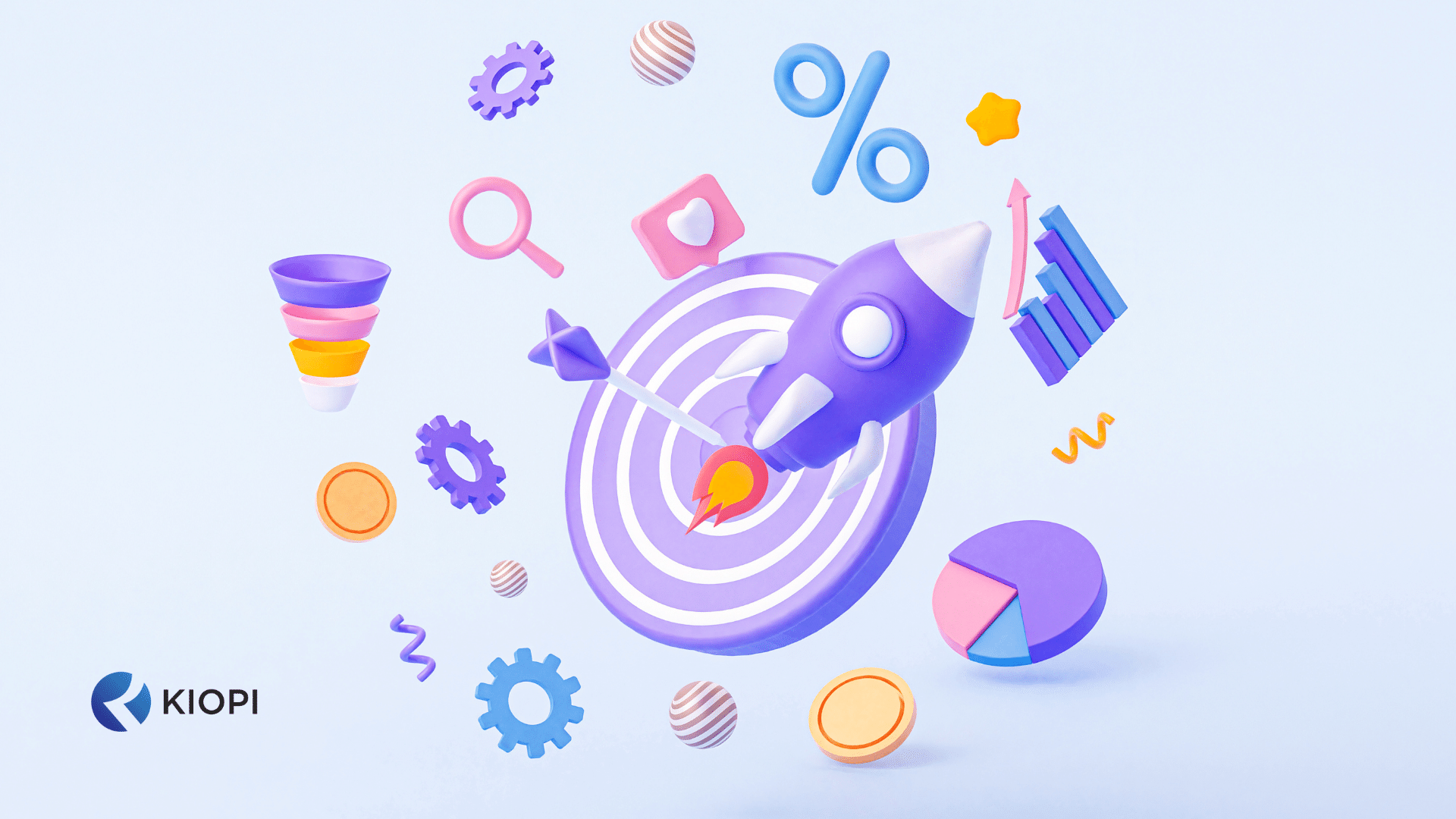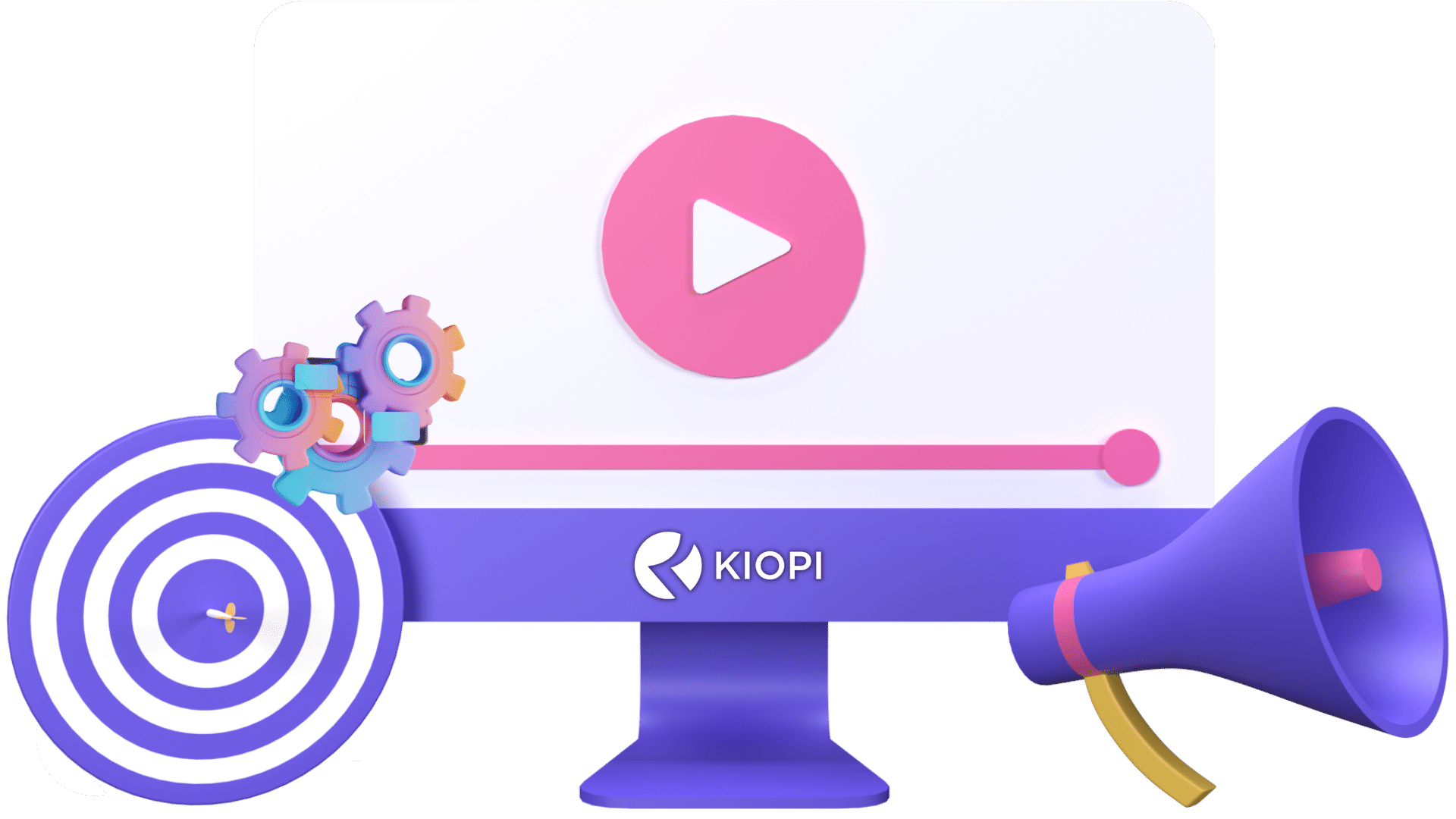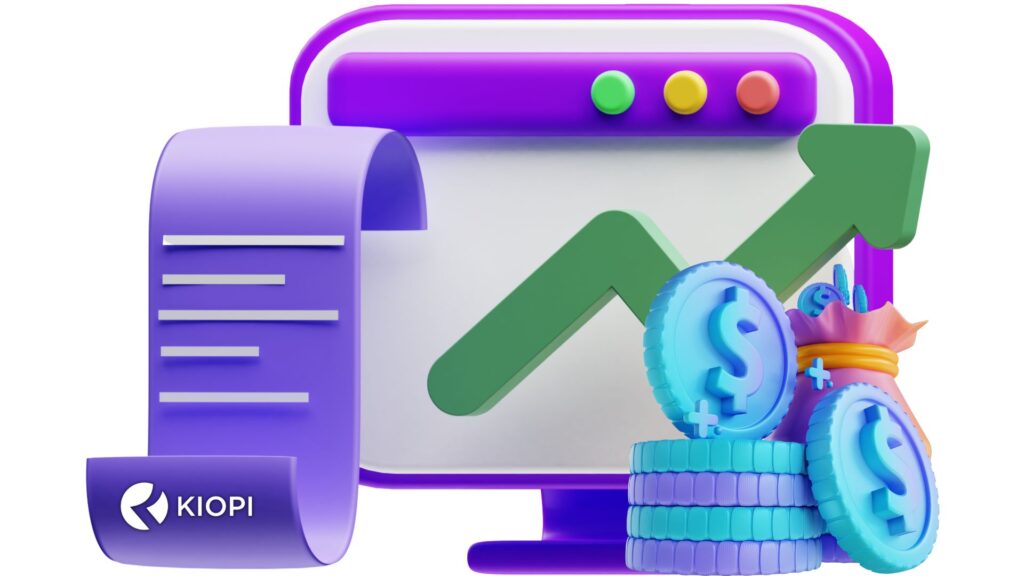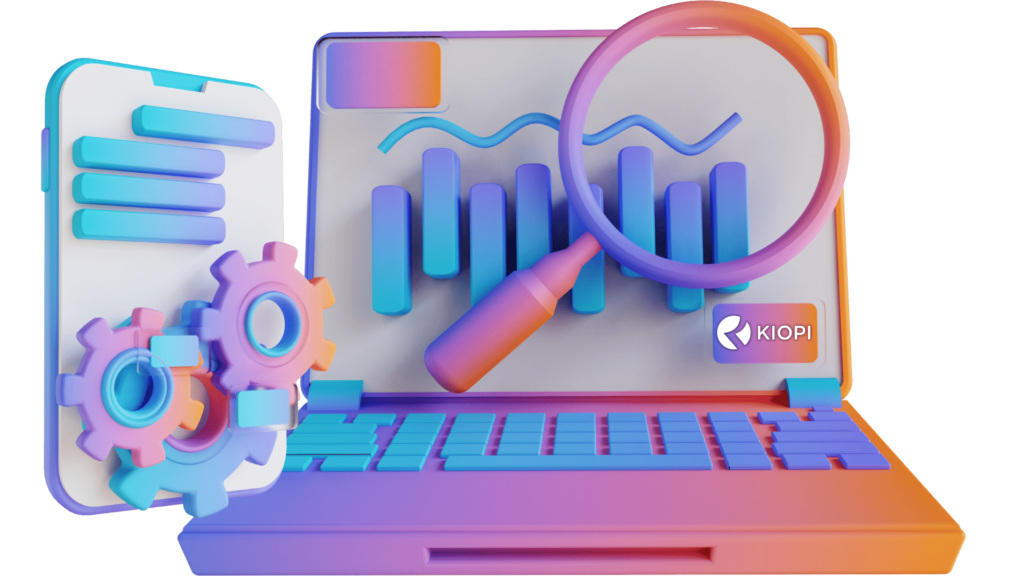Social Media Measuring
lauryn preston
Table of Contents
Social media measurement may not be the most fun part of the job for a social media strategist, but monitoring social metrics can help you improve your social media campaigns so that your social strategy can continue to get better.
Measuring your social media performance can help businesses understand their campaign results and optimize their social media performance. Social media analytic tools allow you to look at your campaigns’ metrics and key performance indicators (KPIs) to understand what worked and how to improve.
Measuring your social media performance can help in the long run when deciding where to spend your social media marketing dollars; if your content is getting viewed more on Facebook than Twitter, you know where to allocate more of your budget. Using these analytics tools to measure your social media success can help you plan future campaigns and increase sales.
Additionally, if you see that you aren’t meeting business objectives, you can analyze historical data from previous social media campaigns to get a better idea of how your social media accounts have changed as well as what works and what doesn’t.
Social Media Metrics to Track in 2023

In 2023, measuring vanity metrics means less and less. While “likes” look nice, they don’t do much for a business in the long run. Vanity metrics might look good on paper but don’t mean increased sales or brand awareness.
It’s important to measure the right social media metrics for each reporting period.
For social media measurement, companies need to pay attention to metrics that measure social media success in more ways than the number of likes. Businesses need to measure whether the content they post makes them money from sales.
When you’re determining metrics for social media measurement, make sure you avoid ambiguity. It’s important to monitor important social media metrics, but it’s also equally important to make sure that the social media data correlates with your social objectives.
If the metrics you select for social media measurement won’t help improve your business objectives, then the process of social media monitoring is a waste of time.
What are the Best Metrics to Track Your Social Media Efforts in 2024?
The most important metrics to track your social media efforts are awareness, engagement rate, customer satisfaction, and social media ROI.
Another important metric you’ll want to add in 2023 is the video content metric, which will measure how well the social media activity around video content performs.
Awareness Metrics

When you measure awareness, you’re essentially measuring how well your target audience recognizes your product or brand. It’s important to measure brand awareness because it evaluates the level of familiarity, recall, and understanding that people have of the product or brand. Measuring brand awareness also shows brand health and the degree to which followers associate positivity or value with your brand online.
Reach
Reach is a social media measurement that shows the number of people on social media that see your content on social channels. It can be measured by organic reach, which is content that people see without paid promoting, or paid reach, content that people see that has been paid for.
If you’re trying to see how effective your social campaigns are, you can look at the daily reach on social media posts. You can also look at the average reach for the entirety of your social media campaign.
You can perform a competitive analysis to determine the optimal time to post on social media.
Impressions
Impressions on social media are the number of times that a piece of content, like a post, ad, or video, is viewed. Impressions are counted every time the content appears on a user’s screen, regardless of whether they interact with it.
For most social media managers, impressions are one of the most important social media metrics. If your social media campaigns bring a large number of impressions, this means that you more than likely have a large following of loyal customers that have no problem watching video content multiple times or showing your content to their friends over and over.
New Follower Growth
Is your business gaining or losing followers on media channels?
Follower counts can be a helpful social media measurement because it shows how many users are interested in following you on at least one social channel.
The new follower growth rate, also called the audience growth rate, measures how many followers a particular social media account increases during a given period. This social data is usually viewed as a percentage and tracks the growth and engagement of that account.
If you’re needing to look up your audience growth rate or even audience demographics (in many cases), go to the admin section of your social media profile, then see if there’s a section that says analytics, insights, or follower count, depending on the social media channel.
If you’re running your social media campaign with Kiopi’s social media posting service, we help you meet your social media goals by compiling social media analytics into presentation-ready reports.
Engagement Metrics

Engagement metrics measure how many people are interacting with your social media content. Engaged users will interact by liking posts, commenting on posts, or sharing content.
Your engagement rate is the judge of the usefulness of your Facebook posts, Instagram posts, Tweets, TikToks, and even LinkedIn posts.
According to a recent study, getting more traffic and improving engagement rates is the main bottleneck for most social media managers.
Without adequate data, many businesses try to boost their engagement rate by adjusting their caption length, experimenting with hashtags and emojis, and tweaking their messages.
Your past top-performing social media posts should be an example of what your future social media content should be. These posts can help you decide whether your social media audience likes videos or images better, what hashtags work, and which captions resonate better with your target audience.
Number of Engagements
The number of engagements or post engagement rate measures the percentage of people engaged with your content divided by the total number of people who saw it.
The social media measurement for engagements can include likes, comments, shares, and various other forms of interactions. This metric is important because it allows businesses to see how well their content performs and make the proper adjustments.
Amplification Rate
The amplification rate evaluates how your social media followers share your business’s content.
To find this social media measurement, divide the number of shares by the user’s followers.
This lets businesses know how viral their content is. For example, if the content has a high amplification rate, it’s seen by many people and has gone viral.
Users that have high amplification rates are considered “influencers” because they are able to secure a good amount of web traffic on a single social media post.
Virality Rate
The virality rate measures the number of users that see and share a piece of content across social media channels. The more users are exposed to a piece of content, the more likely they are to share it, which increases the virality rate.
When evaluating social media campaigns, businesses can look at content’s virality rate to determine which posts were more popular than others.
Video Metrics on Social Media Platforms

Thanks to the social media platform TikTok, more businesses have seen how influential videos can be. With more social media platforms using videos to promote their products and services, there are video metrics than can measure how well they’re performing.
Video Views
Video views are more along the lines of a vanity metric.
For optimal campaign performance, videos need to grab a viewer’s attention within the first 3 seconds of a video.
This applies to all social media platforms.
However, video views metrics are measured differently on every platform.
The major platforms measure their video views as follows:
- YouTube: A viewer intentionally watches your video for 30 seconds
- Facebook: A viewer sees your video for 3 seconds
- Instagram: Like Facebook, an Instagram view counts after 3 seconds unless it’s a Live video that matters as soon as the person joins the Live stream.
- TikTok: A view counts as soon as the video starts playing
Video Completion Rate
The video completion rate measures how many viewers watched a video through to the end. If you find that viewers are not watching your videos all the way through, you know that you have some room for improvement.
Customer Service Metrics

Customer service metrics measure your customers’ experiences with your business or organization. This metric is crucial to social media measurement, as it shows how your users feel about you.
Customer Satisfaction Score
The customer satisfaction score measures how happy customers are with your business’s service or product. This metric is usually based on a brief customer survey asking customers to rate their experience on a scale of 1 to 5, with one being “poor” and five being “great.”
Many times, if your customer service is lacking, you’ll see brand mentions by disgruntled customers on various social media.
It’s important to keep all account mentions positive. So, if you see a negative mention, make sure that you publicly comment to make the situation right.
Customer Loyalty (NPS)
The customer loyalty metric, also known as the Net Promoter Score (NPS), measures your customers’ loyalty and satisfaction. This metric is calculated by asking customers how likely they are to recommend your business to someone else on a scale of 1 to 10.
Return on Investment Metrics

The Return on Investment (ROI) metric is the most important metric because it measures what social media content increases business and growth.
Click-Through Rate
The click-through rate metric measures how often a user clicks a link on your content.
To find the click-through rate, you’ll take the number of clicks and divide it by the number of impressions.
When content has a high click-through rate, it means the content is engaging. This metric is important because it allows businesses to understand how interested the audience is in the content you’re producing.
Social Media Conversion Rate
You’re on social media because you want to convert more of your target audience into paying customers. So, social conversions are one of the social metrics that should not be overlooked.
The conversion rate metric measures the number of times a user completes an action, such as making a purchase or subscribing to a service, in relation to how many times they were exposed to the opportunity to do so.
The conversion rate measures how effective your marketing efforts were on social channels in making your customers perform the actions you wanted them to.
If you have a low conversion rate, try adding a call to action link, making the opportunity to purchase less complicated or adding fewer blanks to fill out in your forms.
Cost-Per-Click
Cost-Per-Click is the cost that businesses pay every time their ad is clicked. To find the CPC, divide the advertising cost by the number of clicks the ad generated.
Measuring your cost per click against the revenue generated by your ad spend is a great way to measure the success of a specific paid social media campaign.
Cost Per Thousand Impressions (CPM)
The cost per thousand impressions is the cost that a business pays per thousand impressions. Also referred to as “cost per mile,” it measures the cost of reaching a follower on a social media platform. This metric is helpful for businesses because it allows them to compare how much each platform costs to reach their audiences.
Why Do Businesses Need a Social Media Analytics Tool?

Businesses can benefit from social media analytics tools because they can measure the results of their social media efforts. Analyzing social media metrics during a campaign can be huge because if you see an area for improvement, you can make it right there.
At Kiopi, we offer various social media tools that let you track your campaign’s progress without waiting until the campaign has finished running.
How Do You Track Social Media Metrics?
Businesses can track their social media metrics through different social media platforms. For example, Facebook users can check their metrics using the “Insight” tab.
Using Kiopi’s social media analytics tool allows you to track all of the above social media metrics in one place. These analytics tools allow you to create your campaign content, schedule it, and measure it. Instead of toggling between each social media app, our social media analytics tools allow you to view your metrics all in one place.
To learn more about social media insights, click the button below!
Social Media Success Measured All In One Place

In terms of tracking social media metrics, being consisted and prepared are critical to effectively measure success. Set up the marketing metrics that align with your business objectives and start measuring them as soon as possible to see how those metrics change over time. Then, you can apply this data to improve your social media marketing efforts over time.
The Kiopi social media software offers an analytics dashboard to view the Engagement Analysis Report. As your campaign runs, the visual report will depict your social media engagement over time.
This report includes likes, comments, shares, and other reactions.
Depending on the time frame you wish to analyze, you can view these reports for the past 30 days, three months, or six months.
To begin your Kiopi journey, we offer a free 14-day trial so businesses can test out all of our features. Plan your next social media campaign with Kiopi!
